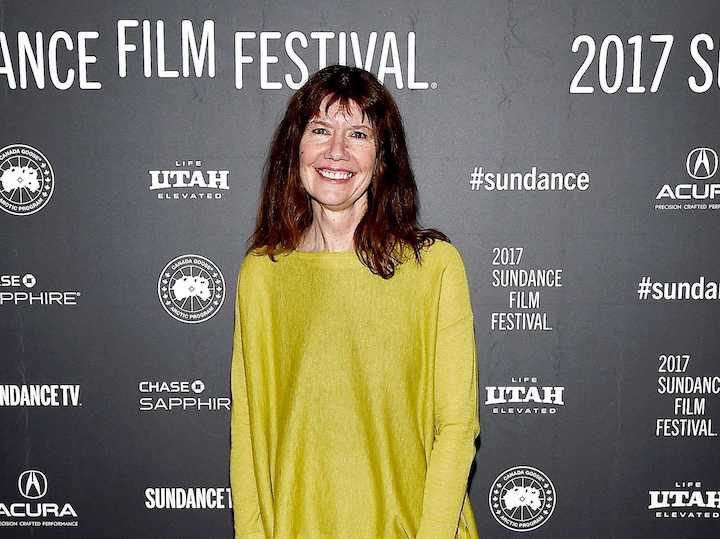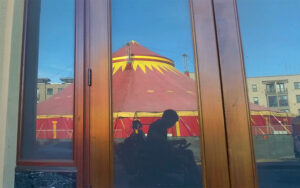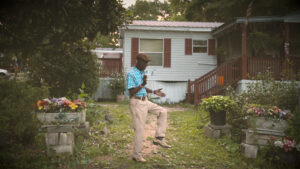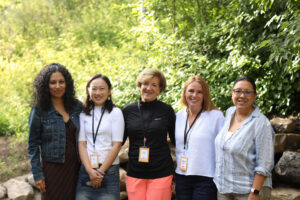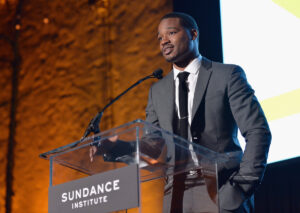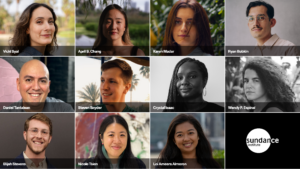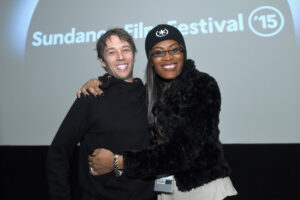Note from the Archives team: Today we’re sharing an early Documentary Film Program gem from the archives. Diane Weyermann launched the Soros Documentary Fund at Open Society Foundation and brought the fund to the Sundance Institute in 2002, where she founded the Sundance Documentary Film Program and created the Documentary Edit & Story Lab.
An interview by Stuart Klawans
Stuart Klawans is the Nation’s film critic and author of Film Follies: The Cinema Out of Order, a finalist for the 1999 National Book Critics Circle Award, and Left in the Dark: Film Reviews and Essays, 1988-2001.
The Soros Documentary Fund was established by the Open Society Institute in 1996 to support the production of documentaries on social justice, human rights, civil liberties, and freedom of expression issues around the world. In 2001, the fund became part of the Sundance Institute, where it has continued to be a crucial resource—both financially and creatively—for documentary filmmakers.
After devoting almost a decade to running the Soros/Sundance Documentary Fund, which she helped launch in 1996, Diane Weyermann joined Participant Productions in October 2005 to head its documentary division. While in New York to work on new Participant titles, she took time off on a sweltering August day to sip iced coffee and talk about the evolution of the documentary fund.
Stuart Klawans: How did the documentary fund get started?
Diane Weyermann: I came to George Soros’s Open Society Institute in 1994 to plan and direct its regional arts and culture programs. These were initiatives housed in the foundations that OSI had created throughout Eastern and Central Europe. We set up the Soros Centers for Contemporary Art, which was a network of exhibition programs and databases for emerging visual artists. And there was the Cultural Link Program, so that theater groups from two different countries, for example, could work together.
SK: When you came in, was there any support for filmmaking?
DW: No. But I have a background in both law and documentary filmmaking, and OSI’s president, Aryeh Neier, understands very well the potential of film to raise awareness. He was keen to support films about social justice, human rights, and freedom of expression. After I’d been at OSI for a year, we brought a proposal to George Soros to set up a fund for documentary filmmaking.
SK: In Eastern and Central Europe?
DW: No, everywhere. We recognized that people who deal with complex, often challenging issues are going to have a hard time raising money, whether they’re in Kazakstan or the U.S. So we decided to make grants internationally— which no other organization was doing at the time—and people embraced that idea.
SK: How quickly did George Soros embrace it?
DW: This was something new, so of course he asked questions. “How do I know this is worth the money? How do we measure the impact?” That’s a hard one to answer—so in deciding on grants, we always looked at the distribution strategy. Who do you want to reach, and how do you intend to reach them?
But the great thing about George Soros was, if you went to him with a compelling idea, even if he wasn’t completely convinced, he’d let you try it. And in those days, that meant he’d write his initials on the proposal and proposed budget, and you’d have your first year’s funding.
SK: You make it sound easy.
DW: Well, we wanted to make the process as accessible as possible for the filmmakers. So we didn’t set up application deadlines. They could come to us whenever they were ready. And, at first, we funded any stage of the film: development, preproduction, work-in-progress. But we had a lot to do, especially at the start: set up guidelines and an application process, establish a grantmaking committee with experts in both film and human rights, get the word out internationally. At OSI, the indispensable people in doing all this were Aryeh Neier, Gara LaMarche, who’s the head of U.S. Programs and a standing member the selection committee, Alvilda Jablanko, and Kyoko Inouye, who stayed with the program through most of its years at OSI.
SK: What were some of the landmarks in your funding at OSI?
DW: One of the first grants went to Calling the Ghosts, by Mandy Jacobson and Karmen Jelincic. That was an exemplary film for us, because it was used in so many different forums to develop awareness of rape as a war crime. It reached the public locally and around the world, in festivals and at special screenings for organizations—the United Nations, Amnesty International. One of the hallmarks of our grantmaking at OSI was that we provided money for documentaries that addressed big, international issues, but also for documentaries on small, local stories. We did that, first, because there was no local funding, and second, because some of those local stories were really global in impact.
SK: Did the focus change, once the fund moved to the Sundance Institute?
DW: Yes, it evolved in certain ways. In April 001, OSI spun off the documentary fund and it became a program of the Sundance Institute, with the enthusiastic support of Robert Redford and Ken Brecher, the executive director. Sundance already had a long involvement with documentary filmmaking, through the festival—so we could immediately enhance the work of the documentary fund by giving a public platform to some of our grant recipients. Of course they had to compete for a slot in the festival, like all the other filmmakers, but several of them would make the cut, every year.
SK: How else did Sundance enhance the documentary fund?
DW: We could now bring our filmmakers into an entire community. Also, our involvement went well beyond financial grantmaking. We could now support filmmakers in the creative process, too. So we started two new labs at the institute for documentary fund recipients: an editing and storytelling lab, and a documentary composers lab, which focused on music as an element of storytelling.
And as all these things evolved, so did the emphasis of our grantmaking. We became more focused on the capacity of documentary storytelling to affect a large, international audience. The story being told might be local, but it could resonate widely, and the film about it could be more than a local action tool. Again, as at OSI, a small, dedicated staff was instrumental in making these things happen: Anna Proulx and Meredith Lavitt, and toward the end of my tenure Shannon Kelley and Kristin Feeley. I’m also tremendously grateful to all the members of the rotating selection committee who worked with me over the 10 years of the fund.
SK: Do you think the documentary fund also changed Sundance?
DW: Oh, there’s no question. For example, there used to be one or two documentaries in the World Cinema section of the festival. Now there’s an entire section for documentary in the World Cinema competition.
SK: This last question is unwieldy, but if anyone can handle it, it’s you. How do you think the field of documentary filmmaking has changed over the past decade?
DW: I feel that the power of documentary is strongly connected to the power of storytelling. Documentary is cinema, and it opens up through the use of cinematic language. I think that documentaries are finding a larger, more enthusiastic audience today because the storytelling has shifted. They move, they engage, they take you away. At the documentary fund, we were able to nurture those tendencies by giving grants to films, rather than news- magazine reports. I know that some people are critical of the use of narrative devices and hybrid form in documentaries. But I remember an event at Sundance where we put together Werner Herzog and Fred Wiseman—polar opposites—and it was fantastic. Herzog started out by saying to Wiseman, “I think we should do battle.” But the discussion turned out to be great. To me, it’s all cinema.
Weyermann, Diane. “Talking with Diane Weyermann.” Interview by Stuart Klawans. The Open Society Institute Presents Soros | Sundance Documentary Fund: A Tenth Anniversary Film Series, August 2006, p. 3-7.




